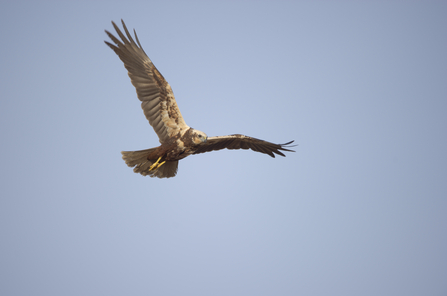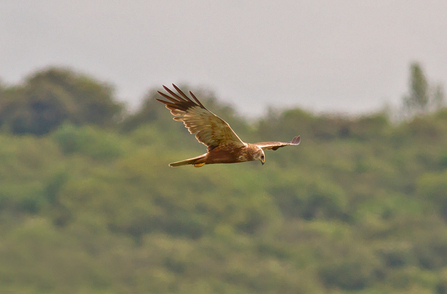Identifying marsh harriers: Males are tricoloured with a buff head, grey wings and tail and a rufous coloured body. Females are brown with a cream crown, bib and breast. Juveniles are darker brown with mostly orange heads.
Harriers as a group are medium to large raptors in the bird of prey family. There are 16 species spread evenly across the world, excluding both the north and south poles.



